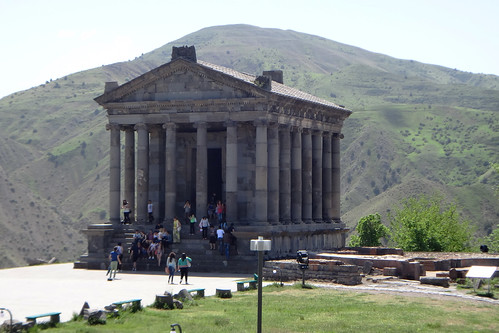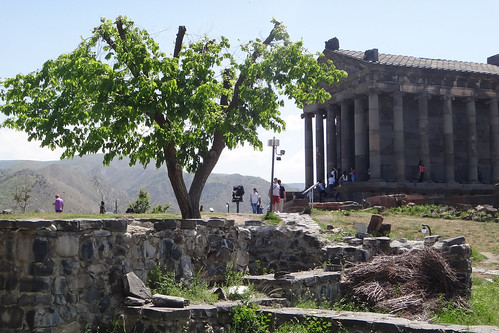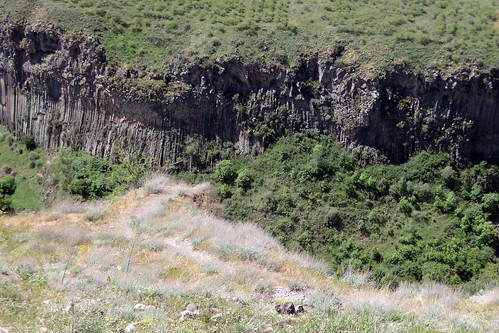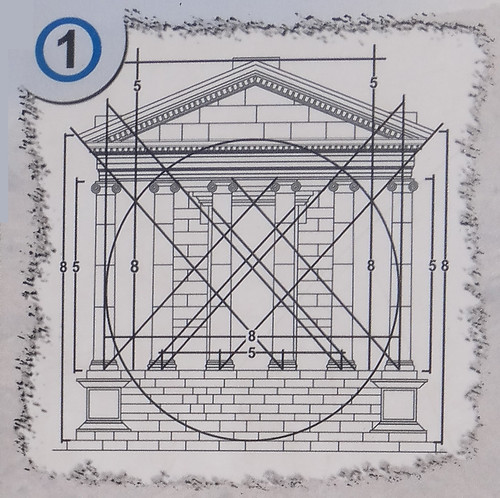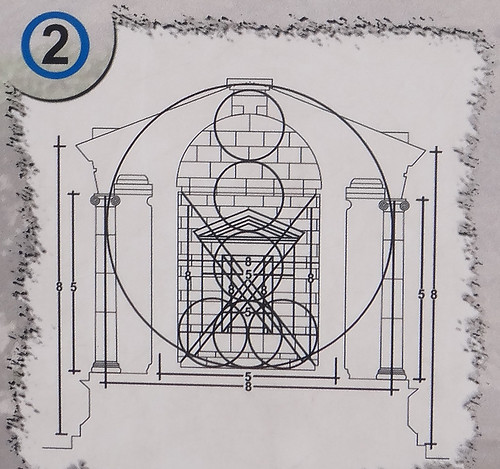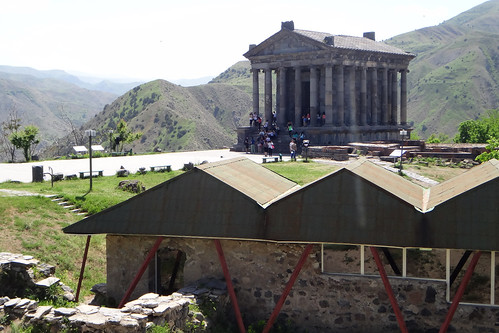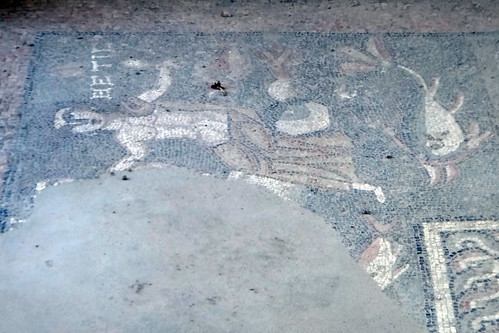Der Tempel in Garni
The Temple to Mythra
The temple sits at the southern tip of the site and is the only remaining intact model of Hellenistic architecture in Armenia. It is a reconstruction of the original, which was destroyed along with the defensive walls in the earthquake of 1679 and rebuilt beginning in 1949.
(here)
Sacred Geometry and the Temple at Garni
Ancestral Armenians built their lives around the laws of nature, carefully studying the seasonal ebbs and flows that governed their lives. Predicting the spring thaw and summer’s rain was more than a show of magic, it was crucial to the survival of the culture. The elements were believed dictated by the gods, and control of the elements became synonymous with control (or flattery) of the gods, to insure their wrath did not strike against the people with flood, drought or pestilence.
Perfected by the Pythagoreans in ancient Greece, sacred geometry was used to construct buildings throughout the Near East and Rome. The temple at Garni shows an advanced stage of this belief, through the measures and geometric forms used in its construction.
(here)
Figure 1 shows the front of the temple with embedded geometric patterns. A circle can be made beginning with the first step and rising to the top edge of the cornice. Note how the circle is dissected by imaginary lines drawn from key points in the building.
In Figure 2, the sanctuary is drawn with imaginary lines showing a perfect circle (1 = the unifying whole), with a group of 6 circles placed within (3+3, the perfect number). The lower four circles fill the space where the statue and sacred fire were placed.
Roman Baths
The 3rd-4th centuries floor mosaics are perhaps the most impressive part of the bath house, the only surviving intact mosaic in Armenia. They are made from stones in 15 hues and depict figures in mythology. That in the main mosaic (2.91 x 3.14 m) depicts a water scene with the sea goddess Thetis and other mythological figures set against a light green background. The inscriptions on the mosaic are Greek but the facial types are oriental, depicting fish, Nereids and the Ichthyocentauri.
(here)
Tags: Yerevan
